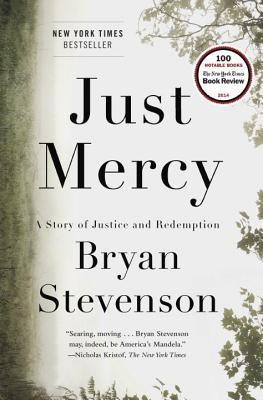 Just Mercy: A Story of Justice and Redemption by Bryan Stevenson
Just Mercy: A Story of Justice and Redemption by Bryan Stevenson
Bryan Stevenson has spent his life giving not just legal aid but himself to otherwise forgotten death-row inmates throughout the deep south. In his understated way, he reveals systematic injustice and dignifies his clients, creating a redemption so powerful that we feel it from just hearing these stories.
Fear and anger are a threat to justice. They can infect a community, a state, or a nation, and make us blind, irrational, and dangerous.
But simply punishing the broken–walking away from them or hiding them from sight–only ensures that they remain broken and we do, too. There is no wholeness outside of our reciprocal humanity.
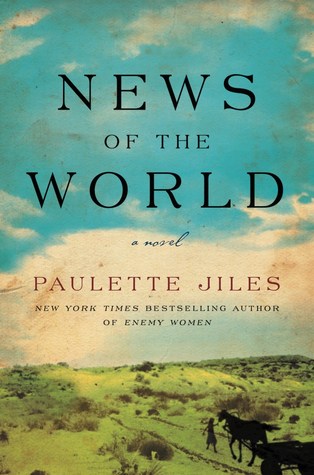 News of the World by Paulette Jiles
News of the World by Paulette Jiles
Captain Kidd, now in his 70s, makes his living traversing post-Civil-War Texas reading newspaper articles to frontier people. When he has to escort a 10-year-old German girl back to her remaining family after having been in Kiowa captivity for most of her life, he seems to be the only one who can usher her precarious life between the two worlds. This vulnerable and unlikely pair proved extremely charming and heartwarming for having helped each other survive the unforgiving prairie
Maybe life is just carrying news. Surviving to carry the news. Maybe we have just one message, and it is delivered to us when we are born and we are never sure what it says; it may have nothing to do with us personally but it must be carried by hand through a life, all the way, and at the end handed over, sealed.
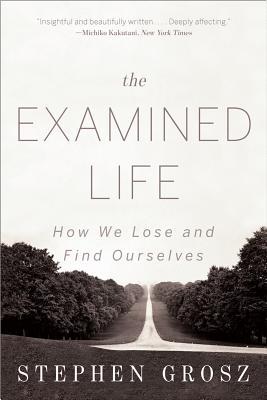 The Examined Life: How We Lose and Find Ourselves by Stephen Grosz
The Examined Life: How We Lose and Find Ourselves by Stephen Grosz
Grosz distills a lifetime of psychoanalysis into crystallized stories that give just what is necessary to witness the patients’Â problems and the profound truths behind them.
All sorrows can be borne if you put them into a story or tell a story about them. But if we cannot find a way of telling our story, our story tells us – we dream these stories, we develop symptoms, or we find ourselves acting in ways we don’t understand.
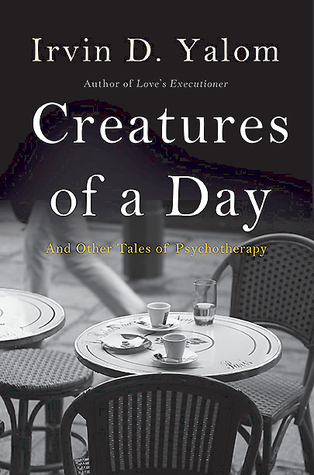 Creatures of a Day: And Other Tales of Psychotherapy and Love’s Executioner and Other Tales of Psychotherapy by Irvin D. Yalom
Creatures of a Day: And Other Tales of Psychotherapy and Love’s Executioner and Other Tales of Psychotherapy by Irvin D. Yalom
Yalom is a therapist and mensch of the highest order and each of the ten patients he shares with us gives us a glimpse into a fascinating and compassionate relationship of insight and healing.
What has been given is a new perspective on living life, and what has been taken away is the illusion of limitless life and the belief in a personal specialness exempting us from natural law.
 Each of these books describes 10 patients in depth and draws such vivid characters that they stay with you. Like the accountant who is resistant to therapy but whose dreams are so rich that they speak to the therapist for him. Or the older woman who can’t stop living for a lover from a weekend a decade ago (for whom Yalom must be love’s executioner).
Each of these books describes 10 patients in depth and draws such vivid characters that they stay with you. Like the accountant who is resistant to therapy but whose dreams are so rich that they speak to the therapist for him. Or the older woman who can’t stop living for a lover from a weekend a decade ago (for whom Yalom must be love’s executioner).
Beneath Yalom’s effectiveness customizing therapies for his patients lies a philosophy that the human condition consists of four givens:Â isolation, meaninglessness, mortality and freedom. His existential bent spoke to me.
I think my quarry is illusion. I war against magic. I believe that, though illusion often cheers and comforts, it ultimately and invariably weakens and constricts the spirit.
Four givens are particularly relevant for psycho-therapy: the inevitability of death for each of us and for those we love; the freedom to make our lives as we will; our ultimate aloneness; and, finally, the absence of any obvious meaning or sense to life.
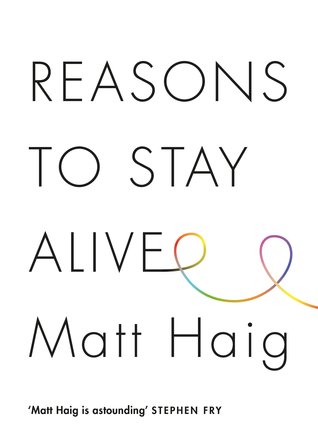 Reasons To Stay Alive and How To Stop Time by Matt Haig
Reasons To Stay Alive and How To Stop Time by Matt Haig
In Reasons To Stay Alive Matt Haig chronicles his first major break into anxiety and depression in his mid-twenties. His raw account of what it feels like to be paralyzed by anxiety and debilitated by depression is refreshingly authentic. As he takes us through years of learning to live with and come back from these conditions, he learns to appreciate who he is and tells us how to channel the intensity into an appreciation for love, life and art. It’s a brave account which helped me deal with my own versions of these.
To other people, it sometimes seems like nothing at all. You are walking around with your head on fire and no one can see the flames.
Life is waiting for you. You might be stuck here for a while, but the world isn’t going anywhere. Hang on in there if you can. Life is always worth it.
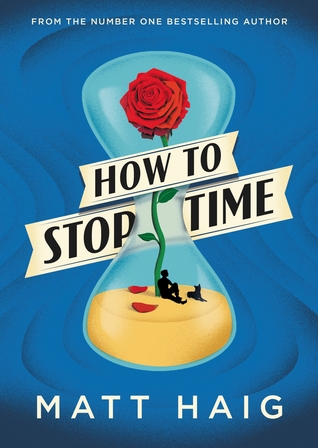 How To Stop Time is a fictional account of a man named Tom Hazzard who develops a rare disease at puberty called Anageria, which slows your aging down to 1 year for every 15 lived. One of Tom’s first jobs is playing the lute in Shakespeare’s theatre. At present day Tom is in his 400s having gained a certain wisdom along the road of his weirdly evasive life trying not to be recognized as different by avoiding long-term relationships. It’s a somewhat clunky conceit which nevertheless allows Haig to deliver us a new perspective on embracing our limitations and savoring love and life, no matter how quickly or slowly it may pass.
How To Stop Time is a fictional account of a man named Tom Hazzard who develops a rare disease at puberty called Anageria, which slows your aging down to 1 year for every 15 lived. One of Tom’s first jobs is playing the lute in Shakespeare’s theatre. At present day Tom is in his 400s having gained a certain wisdom along the road of his weirdly evasive life trying not to be recognized as different by avoiding long-term relationships. It’s a somewhat clunky conceit which nevertheless allows Haig to deliver us a new perspective on embracing our limitations and savoring love and life, no matter how quickly or slowly it may pass.
Every man takes the limits of his own field of vision for the limits of the world.
The Fire Next Time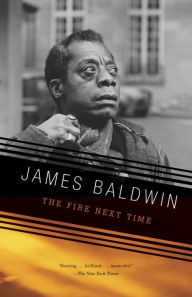 and Go Tell It On The Mountain by James Baldwin
and Go Tell It On The Mountain by James Baldwin
The Fire Next Time is two long letters, one to the American people, the other to his 14-year-old nephew. Written in the 60s, Baldwin’s graceful but direct attack on the state our country and it’s insidious racism is still perfectly relevant and precisely what we need to hear. He describes his own journey of disillusionment with the church and calls upon us who are awake to steer our American history off its collision course:
If we — and now I mean the relatively conscious whites and the relatively conscious blacks, who must, like lovers, insist on, or create, the consciousness of the others — do not falter in our duty now, we may be able, handful that we are, to end the racial nightmare, and achieve our country, and change the history of the world. If we do not now dare everything, the fulfillment of that prophesy, re-created from the Bible in a song by a slave, is upon us:
“God gave Noah the rainbow sign,
No more water, the fire next time!”
 Go Tell It On The Mountain, Baldwin’s first novel, is an extraordinary semi-autobiographical account of a young man coming of age in Harlem in a family whose life revolves around the storefront Pentecostal church down the block. The intensity of young John’s faith and adolescence creates an almost surreal brew of spirituality and family psychology as he attempts to navigate his own emerging power through the sometimes terrifying examples of the men around him. But greater than the mercurial and obstinate men are the fiercely devoted women who surround him and keep the faith. Having become an intensely Christian soul myself during puberty, this book resonated, fascinated and terrified me.
Go Tell It On The Mountain, Baldwin’s first novel, is an extraordinary semi-autobiographical account of a young man coming of age in Harlem in a family whose life revolves around the storefront Pentecostal church down the block. The intensity of young John’s faith and adolescence creates an almost surreal brew of spirituality and family psychology as he attempts to navigate his own emerging power through the sometimes terrifying examples of the men around him. But greater than the mercurial and obstinate men are the fiercely devoted women who surround him and keep the faith. Having become an intensely Christian soul myself during puberty, this book resonated, fascinated and terrified me.
John’s heart was hardened against the Lord. His father was God’s minister, the ambassador of the King of Heaven, and John could not bow before the throne of grace without first kneeling to his father.
 The Lacuna by Barbara Kingsolver
The Lacuna by Barbara Kingsolver
The Lacuna is the fictional story of a sensitive young man whose mother is Mexican and father is American, and his time growing up in Mexico and then living in the States. It is a portrait of an artist as a young man, coming into being between two worlds. Soli (Frida’s nickname for the protagonist) is a fascinating, enigmatic and ultimately reclusive writer. A lacuna is “an unfilled space or interval; a gap” or more specifically, sometimes, “a missing portion of a book or manuscript.” Soli’s life is marked by these in at least these three ways: a rock opening in the ocean into which he dives, a missing journal and his hidden sexuality. It becomes a central fact that:
The most important thing about a person is always the thing you don’t know.
I read this because it is Maile’s favorite book, to share in it and better know her. Maile loves Kingsolver’s books and this one in particular partly because Frida Khalo animates much of it. Soli works for a while in Frida’s and Diego’s house and Frida is the largest character throughout. The book is worth it just to have her as a confidant in the middle.
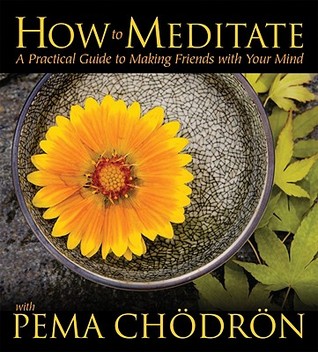 How to Meditate, Pure Meditation, and When Things Fall Apart by Pema Chodron
How to Meditate, Pure Meditation, and When Things Fall Apart by Pema Chodron
These three books all deliver the same messages over and over: how to meditate the Tibetan Buddhist way and why it is a unique tool for making peace with our discursive monkey minds. The goal of this type of meditation is simply to sit with ourselves, not to do anything other than gently and lovingly grow our awareness of the present while not getting distracted by our thoughts.
 In a way it is a stripping away, a practice of simply showing up for ourselves to check in, to show ourselves kindness, and to practice the initially daunting task of recognizing how constantly our thinking tries to blow things up and out of proportion. From my paraphrased notes:
In a way it is a stripping away, a practice of simply showing up for ourselves to check in, to show ourselves kindness, and to practice the initially daunting task of recognizing how constantly our thinking tries to blow things up and out of proportion. From my paraphrased notes:
Reality is not as solid as we think. And we can liberate ourselves from enormous suffering and anguish which destroys the quality of our lives, that we can dissolve by learning to see the illusory quality of all this thought that arises in our mind and the enormous importance we give to it and the enormous pain it causes us. We can begin to see how suffering escalates and begin to deescalate suffering. We make things solid with our minds, things are not as solid as they seem.
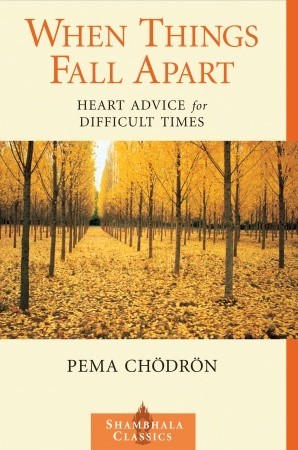 The first two book are workshops recorded over a weekend or week. And we can feel ourselves sitting and struggling along with all the other meditators in front of her to come back to our breath time and again, to practice loving-kindness toward ourselves as meditation dredges up memories and emotions, as we attempt to dissolve our own time-honored narratives in which we are stuck. I love the sanity she brings by teaching us to contextualize our thoughts and emotions within a greater sense of self than just how we think or feel at any given moment.
The first two book are workshops recorded over a weekend or week. And we can feel ourselves sitting and struggling along with all the other meditators in front of her to come back to our breath time and again, to practice loving-kindness toward ourselves as meditation dredges up memories and emotions, as we attempt to dissolve our own time-honored narratives in which we are stuck. I love the sanity she brings by teaching us to contextualize our thoughts and emotions within a greater sense of self than just how we think or feel at any given moment.
Noone else has a clue what is going on in your mind. You are the only one who really knows what is happening with you at any moment in time. A lot of people will give you good advice, but you have to trust your own sense of insight into your own mind. We need to become our own meditation instructors. You’re the only one who knows if you’re too tense, or too harsh, or spaced out, or wandering all over the place, or caught up in something… what mood you’re in, what thoughts you’re thinking, how much spaciousness, settledness, you feel. You’re the only one. Meditation practices gathering confidence connecting with your own mind at any given moment so that your thoughts and emotions become accessible to you and you have tools to work with your mind.
Honorable Mentions
 Lying On The Couch by Irvin Yalom – This fictional drama isn’t as real as the other two books listed above, but it grew on me and ended up being a page-turner as he wove this psychoanalytic drama together around several compelling therapist/patient relationships.
Lying On The Couch by Irvin Yalom – This fictional drama isn’t as real as the other two books listed above, but it grew on me and ended up being a page-turner as he wove this psychoanalytic drama together around several compelling therapist/patient relationships. Song of Solomon by Toni Morrison – This is such a dense work I don’t feel qualified to comment on after only one reading. It reads like a vision delivered to a prophet. I will need to reread to process more fully.
Song of Solomon by Toni Morrison – This is such a dense work I don’t feel qualified to comment on after only one reading. It reads like a vision delivered to a prophet. I will need to reread to process more fully. Harry Potter and the Order of the Phoenix by J.K. Rowling – The ominous tone that hangs over this book made it one of the least enjoyable of the series. Like Harry, I can’t stand not knowing and being cut off from Dumbledore the whole time.
Harry Potter and the Order of the Phoenix by J.K. Rowling – The ominous tone that hangs over this book made it one of the least enjoyable of the series. Like Harry, I can’t stand not knowing and being cut off from Dumbledore the whole time. Harry Potter and the Half-Blood Prince by J.K. Rowling – Though Dumbledore is my very favorite of Rowling’s characters, Snape emerges in this one as the most inscrutable and complex, and this is perhaps my favorite of the HP series. I got seduced along with Harry into the potion master’s spells all the way.
Harry Potter and the Half-Blood Prince by J.K. Rowling – Though Dumbledore is my very favorite of Rowling’s characters, Snape emerges in this one as the most inscrutable and complex, and this is perhaps my favorite of the HP series. I got seduced along with Harry into the potion master’s spells all the way. Harry Potter and the Deathly Hallows by J.K. Rowling – Riddle and his Horcruxes make for a fantastic puzzle and the pre-apocalyptic feeling of this one doesn’t fail to deliver a great ending to the series.
Harry Potter and the Deathly Hallows by J.K. Rowling – Riddle and his Horcruxes make for a fantastic puzzle and the pre-apocalyptic feeling of this one doesn’t fail to deliver a great ending to the series. Ghettoside: A True Story of Murder in America by Jill Leovy – This all-too-real murder mystery is a profile in LA detective and ghetto culture, injustice, and systemic inequality, racism, and despair. Important and difficult.
Ghettoside: A True Story of Murder in America by Jill Leovy – This all-too-real murder mystery is a profile in LA detective and ghetto culture, injustice, and systemic inequality, racism, and despair. Important and difficult.
